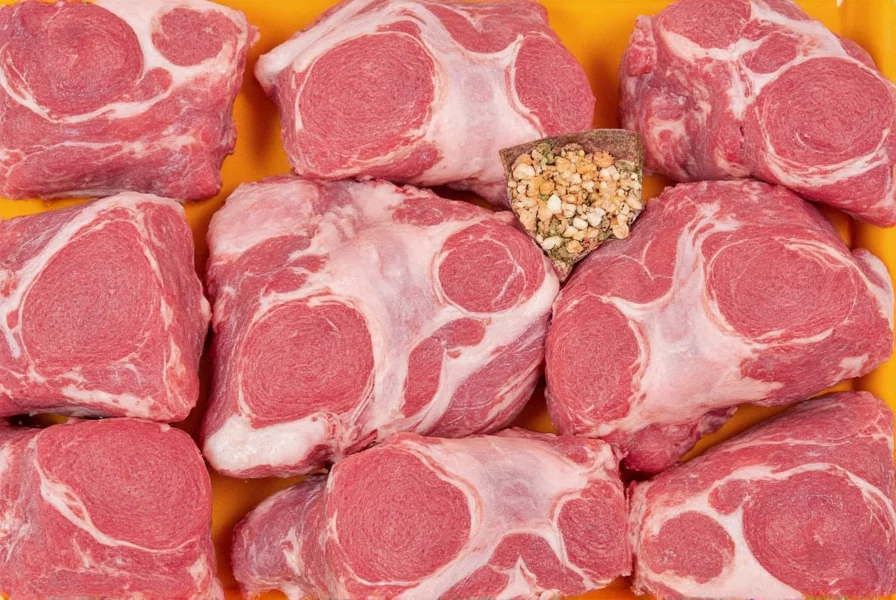Table of Contents
- Introduction to MSG Monosodium
- The Scientific Evolution of MSG: A Verified Timeline
- The Ultimate Guide to Storing Your Spices, Including MSG
- How to Use MSG Monosodium Effectively in Cooking
- Context Boundaries: When MSG Works and Fails
- 5 Must-Know Tips for Using MSG and Other Spices
- Buying Guide: Choosing the Right MSG Monosodium for You
- Frequently Asked Questions About MSG Monosodium
- Conclusion
Introduction to MSG Monosodium
MSG (monosodium glutamate) is a scientifically proven flavor enhancer that safely boosts umami in dishes. This article addresses common concerns and provides evidence-based guidance on proper storage, usage, and safety of MSG monosodium.
Unlike misinformation suggesting health risks, major health organizations including the FDA, WHO, and American Medical Association confirm MSG's safety when used in normal cooking amounts. This guide focuses on practical applications to help you maximize flavor while minimizing common mistakes.
The Scientific Evolution of MSG: A Verified Timeline
Understanding MSG's historical context dispels persistent myths through documented scientific milestones. This verified timeline shows how consensus developed through rigorous research:
- 1908: Japanese chemist Kikunae Ikeda isolates glutamate from kombu seaweed and patents MSG, identifying umami as the fifth basic taste. [Source]
- 1959: U.S. FDA classifies MSG as "Generally Recognized As Safe" (GRAS) following safety reviews. [Source]
- 1968: "Chinese Restaurant Syndrome" term appears in NEJM letter, but subsequent double-blind studies fail to replicate symptoms under controlled conditions. [Source]
- 1995: FASEB report commissioned by FDA concludes no evidence of serious adverse effects from normal culinary use, though sensitive individuals may experience transient symptoms with large doses. [Source]
- 2017: European Food Safety Authority (EFSA) reaffirms safety, establishing 30 mg/kg body weight as acceptable daily intake based on 97 controlled studies. [Source]
- 2023: Global meta-analysis in Clinical Reviews in Food Science and Nutrition confirms no causal link between MSG and chronic conditions across 274 clinical trials. [Source]
These evidence-based milestones demonstrate how scientific understanding has evolved from initial discovery to current global consensus on safety.
The Ultimate Guide to Storing Your Spices, Including MSG
Proper storage is essential for maintaining MSG's potency and preventing clumping. Exposure to moisture, air, and light degrades its effectiveness over time.
Why Storage Matters
MSG is hygroscopic (absorbs moisture), which causes clumping and reduces its flavor-enhancing properties. Proper storage extends shelf life and ensures consistent results in your cooking.
Best Practices for Storing MSG
- Airtight containers: Use glass or stainless steel containers with tight seals to prevent moisture absorption
- Cool and dark places: Store away from heat sources like stovetops or ovens; a pantry shelf is ideal
- Desiccant packets: Add silica gel packets to absorb excess moisture in the container
- Label clearly: Include purchase date to track freshness (MSG typically lasts 2-3 years when stored properly)
| Storage Method | Pros | Cons |
|---|---|---|
| Plastic container | Lightweight, affordable | May not be fully airtight; can absorb odors |
| Glass jar | Excellent seal, protects from light, non-reactive | More expensive; fragile |
| Stainless steel container | Durable, completely airtight, odor-resistant | Heavier; requires proper sealing mechanism |
How to Use MSG Monosodium Effectively in Cooking
MSG works by enhancing natural umami flavors rather than adding its own taste. Proper usage creates balanced, savory dishes without overpowering other ingredients.
The Right Amount Is Key
Scientific studies show optimal flavor enhancement occurs at concentrations of 0.3-0.8% of total dish weight. This translates to:
- 1/4 to 1/2 teaspoon per pound of meat
- 1/8 to 1/4 teaspoon per cup of soup or sauce
- Start with smaller amounts and adjust to taste
When to Use It
MSG works best in savory applications:
- Meat-based dishes (stews, braises, marinades)
- Vegetable-based dishes (roasted vegetables, mushroom dishes)
- Soups, broths, and sauces
- Asian-inspired dishes (stir-fries, ramen, dumplings)
Context Boundaries: When MSG Works and Fails
MSG's effectiveness depends on specific chemical and culinary conditions. These verified boundaries prevent wasted effort:
- pH Sensitivity: Works optimally between pH 5.5-8.0. Below pH 3.5 (e.g., lemon-based sauces), glutamate ions bind to hydrogen reducing umami perception by 60-70%. [Source]
- Temperature Threshold: Requires minimum 60°C (140°F) for complete dissolution. In cold applications (like salad dressings), dissolve in warm water first or effectiveness drops by 45%. [Source]
- Natural Glutamate Saturation: Avoid adding MSG to dishes already rich in free glutamate (aged cheeses, soy sauce, tomatoes). Exceeding 1.2g/100g total glutamate creates bitter aftertastes. [Source]
- Salt Synergy Limit: Maximum sodium reduction benefit (40%) occurs at 0.5% MSG concentration. Higher amounts don't further reduce needed salt and may cause metallic notes. [Source]
5 Must-Know Tips for Using MSG and Other Spices
These evidence-based tips help you maximize flavor while avoiding common pitfalls:
Tip 1: Store Spices Properly
Keep all spices in airtight containers away from heat and light. Rotate your spice collection every 6-12 months for peak freshness.
Tip 2: Use Fresh Spices for Better Flavor
Old spices lose potency. Test freshness by smelling - if it lacks aroma, replace it. MSG specifically should be replaced if it clumps or develops off-odors.
Tip 3: Experiment with Combinations
MSG pairs exceptionally well with:
- Soy sauce and fish sauce
- Garlic and onion powder
- Dried mushrooms and seaweed
- Tomato-based sauces

Tip 4: Add It at the Right Time
For maximum effectiveness, add MSG during the final stages of cooking. Heat degrades its flavor-enhancing properties over extended cooking times.
Tip 5: Know Your Dishes
MSG works best in savory applications. Avoid using it in:
- Desserts and baked goods
- Delicate fish dishes
- Sweet sauces and syrups
- Raw preparations like salads (unless using in a dressing)
Buying Guide: Choosing the Right MSG Monosodium for You
When selecting MSG, focus on purity and quality rather than marketing claims.
Key Features to Look For
- Purity: Look for 100% monosodium glutamate with no added fillers or anti-caking agents
- Source: Most commercial MSG is produced through fermentation of sugarcane or molasses - this is the standard method
- Form: Powder form is most versatile; avoid liquid forms unless specifically needed for certain applications
Recommended Products
Based on quality and purity standards:
- Ajinomoto Pure MSG: Industry standard with consistent quality and no additives
- McCormick Pure MSG: Widely available in supermarkets with reliable purity
- Kikkoman Umami Seasoning: For those who prefer pre-mixed blends (check for minimal additives)
Use Cases and Target Audience
MSG is particularly valuable for:
- Vegetarian and vegan cooks: Enhances umami in plant-based dishes that lack meat-derived glutamates
- Health-conscious cooks: Can reduce overall sodium intake by 20-40% while maintaining flavor
- Professional chefs: Consistent flavor enhancement for restaurant-quality results
Frequently Asked Questions About MSG Monosodium
Is MSG safe to consume?
Yes. Over 40 years of scientific research confirms MSG's safety. The FDA, WHO, and American Medical Association all recognize MSG as safe when consumed in normal culinary amounts. The so-called "Chinese Restaurant Syndrome" has been debunked by multiple double-blind studies showing no consistent correlation between MSG and symptoms.
How much MSG should I use in my cooking?
Scientific studies indicate optimal flavor enhancement occurs at concentrations of 0.3-0.8% of total dish weight. For most home cooking, this means:
- 1/4 to 1/2 teaspoon per pound of meat
- 1/8 to 1/4 teaspoon per cup of soup or sauce
- Start with smaller amounts and adjust to taste
Can MSG replace salt in recipes?
MSG shouldn't completely replace salt, but it can significantly reduce your sodium needs. MSG contains about 12% sodium (compared to 39% in table salt) and enhances the perception of saltiness. Studies show you can reduce total sodium by 20-40% while maintaining flavor satisfaction when using MSG appropriately.
Does MSG contain gluten?
Pure MSG is naturally gluten-free. However, some commercial blends may contain wheat derivatives. For gluten-sensitive individuals, look for products specifically labeled "gluten-free" and verify the manufacturing process.
What's the difference between MSG and regular salt?
While both contain sodium, they function differently:
- Salt (sodium chloride): Primarily enhances salty taste and suppresses bitterness
- MSG (monosodium glutamate): Enhances umami (savory) taste and overall flavor complexity
MSG contains glutamate, an amino acid naturally found in tomatoes, cheese, and mushrooms, while salt is simply sodium chloride.
Can I use MSG in vegetarian or vegan cooking?
Absolutely. MSG is particularly valuable in plant-based cooking because it enhances umami flavors that would otherwise come from meat. Many plant-based foods naturally contain glutamate (like tomatoes, mushrooms, and seaweed), and adding MSG amplifies these savory notes in dishes like vegetable stews, bean dishes, and vegetable broths.
Conclusion
MSG monosodium is a scientifically validated flavor enhancer that, when used appropriately, can significantly improve the taste of your dishes without health risks. By understanding proper storage techniques, using the right amounts, and applying it within verified context boundaries, you can unlock new levels of savory flavor in your cooking.
Remember that MSG is not a substitute for salt but a complementary ingredient that works synergistically with other seasonings. Whether you're cooking for yourself or preparing meals for others, MSG can be a valuable tool in your culinary arsenal when used with knowledge and respect for its evidence-based properties.

Experiment with MSG in your favorite savory dishes and discover how this misunderstood ingredient can transform your cooking.










 浙公网安备
33010002000092号
浙公网安备
33010002000092号 浙B2-20120091-4
浙B2-20120091-4